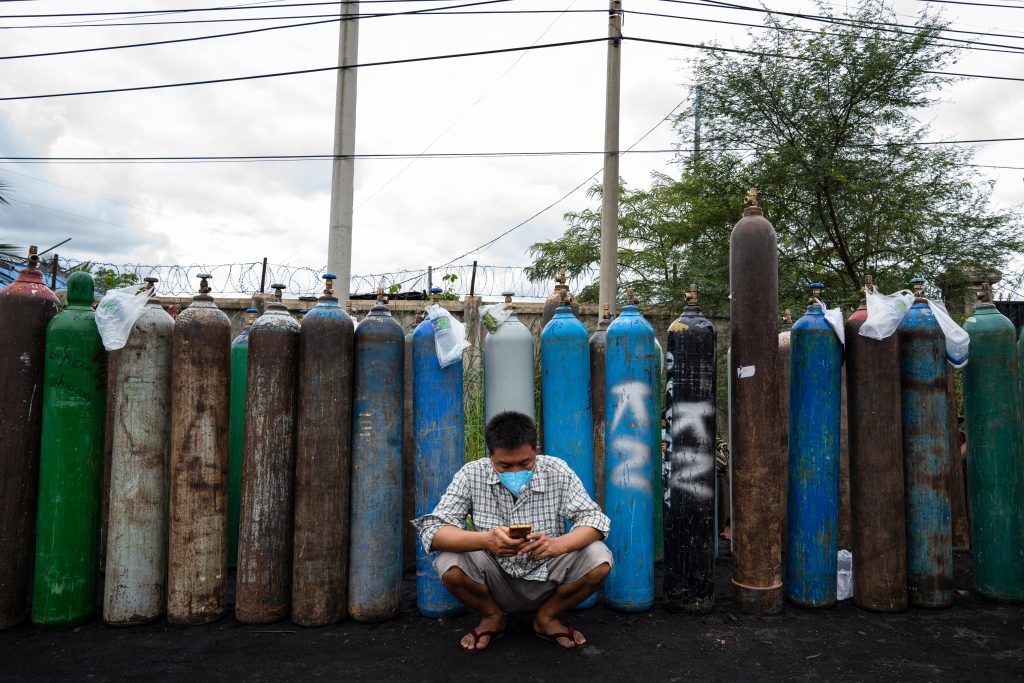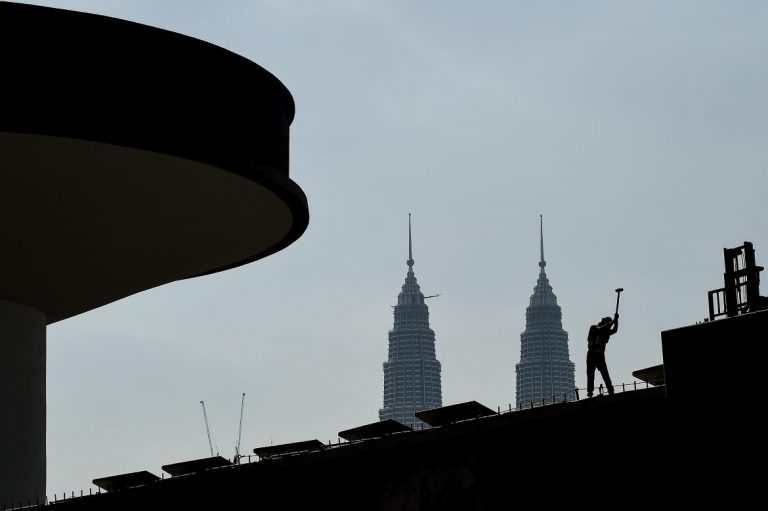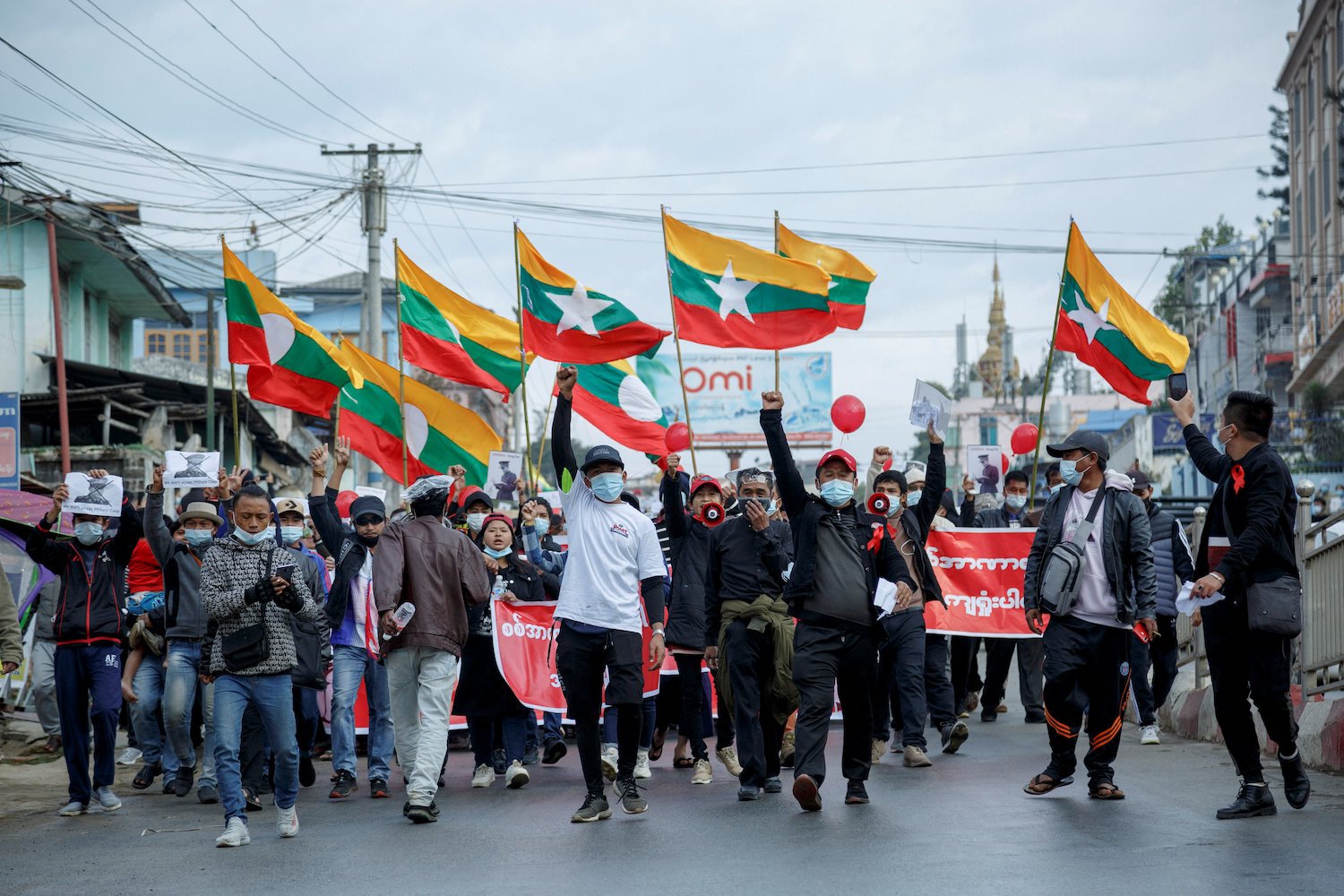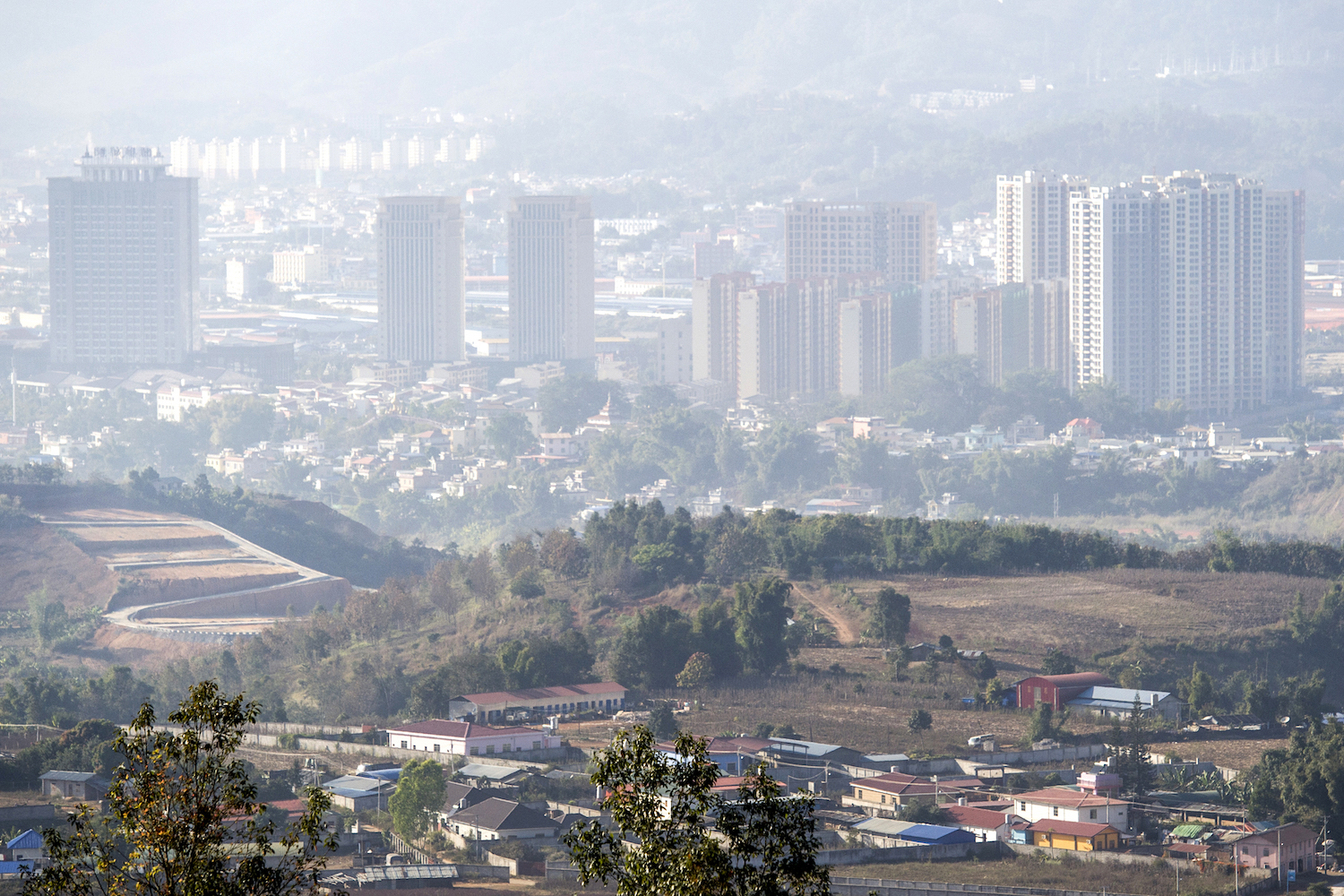As COVID-19 wreaks havoc in Mandalay, volunteers are doing their best to help save lives, cemeteries are overwhelmed and daring protesters continue to defy the junta with street marches.
By FRONTIER
The sound of sirens echoes through the streets of Mandalay city, as ambulances ferry people with COVID-19 symptoms in what is often a fruitless search for a hospital that will accept them. Many with serious symptoms die before they can be admitted to hospitals despite the best efforts of charity group members and volunteers who tend to them during the journey.
“The hospitals are refusing to accept patients and patients often lose their lives while ambulances are rushing from one hospital to another,” said charity group member U Ko Thet, who also owns the Sein Sunn Nyo oxygen factory.
COVID-19 patients in Mandalay are being treated at seven hospitals, including the People’s Hospital, and a 204-bed treatment centre that opened at the site of the city’s former airport in Chanmyatharzi Township in July. Yet, the relatives of patients in hospitals say these facilities are full or near capacity, and patients are not receiving adequate care because of a shortage of healthcare personnel.
“If a patient tests positive, we have to request the help of volunteer charity groups for transportation and the groups don’t have as many ambulances as before,” said a doctor at one of Mandalay’s hospitals, who asked not to be identified. “The number of patients is out of all proportion to the number of healthcare workers, and it is the people who suffer. Health workers are also getting infected.”
The doctor said the highly-infectious Delta variant of COVID-19 has sparked fear among Mandalay residents. “People are beginning to believe that if you are hospitalised, you are likely to die. This variant is so severe, and many patients need intensive care,” the doctor said.
Personnel and oxygen shortages
The third wave of COVID-19 has hit Myanmar much harder than the first and second waves, when the National League for Democracy government’s response to the pandemic was bolstered by the support of legions of charity group volunteers, international aid, and the trust and cooperation of the public.
In addition to government healthcare workers participating in the Civil Disobedience Movement, the number of volunteers at clinics and hospitals has also dramatically decreased. With hospitals overflowing and understaff, many seriously ill COVID-19 patients have no choice but to make do at home.
“People are in dire need of everything, unlike during the time of the people’s [NLD] government,” said Ko Thet.
“During the first and second waves … everyone cooperated to help [COVID-19 patients], in a systematic and disciplined way. Now, everything is upside-down. There is a shortage of skilled doctors and nurses to provide proper treatment and people are losing their lives. We volunteers are helping not because we support the dictators, but because we are people helping people,” he said.
An official in the sanitation department of Mandalay City Development Committee said more than four tonnes of biohazard waste was being collected daily from hospitals and quarantine centres. The amount is actually less than during the first and second waves, sid the official, who asked not to be identified, but the waste was not being disposed of as safely because of the shortage of volunteers.
“It is becoming dangerous – we have to take great care not to become infected,” said the official, who asked not to be named.
As with everywhere else in the country, the high number of COVID-19 patients with breathing difficulties has sparked a frantic search in Mandalay city for oxygen with which to treat them. Volunteers from young men’s associations and charity groups have been distributing oxygen to patients in urgent need and for many this is the only option.
“At present, oxygen is the first priority,” said Ko Thet. “My plant can fill 700 40-litre cylinders a day for emergency patients in dire need.”
Even so, Ko Thet’s factory is unable to help everyone who is in need of oxygen, he said.
Some residents are pooling their money to buy oxygen for their neighbors. U Satee, a Mandalay resident, said he and two friends in a motorcyclist group have been buying oxygen to distribute to the seriously ill.
“When we see that people have survived with the help of the oxygen we donated, we are encouraged and greatly relieved,” he said.
Charity groups in Mandalay say that with hospitals and quarantine centres at capacity, the number of people dying from COVID-19 at home is rising every day.
U Tint, who heads the Parahita Mingaung group, a volunteer association, told Frontier 22 patients had died of COVID-19 at the hospital he was volunteering at on August 2 alone.
“We are taking out the bodies. More than 200 bodies a day are being cremated at two of the three cemeteries in Mandalay,” he said.
Between July 1 and August 2, the three cemeteries cremated or buried 2,761 bodies, including a record 185 on July 30.
Protests and civil disobedience continue
The State Administration Council went to great lengths to reopen schools on June 1 after a year of COVID-19 related closure, but a boycott by students as well as teachers, many of whom had joined the Civil Disobedience Movement, meant that only about 20 percent of students returned to classes at the start of term.
As COVID-19 cases began to climb again, the regime announced on July 8 that all schools would be closed until July 23, and they are yet to reopen.
As part of the campaign to contain the spread of COVID-19, Mandalay’s Zay Cho market, Mann Myanmar Plaza and other popular shopping venues were closed on September 13 last year. The military council tried to force shops at Zay Cho market to open at the beginning of June, but owners have resisted because of their opposition to the junta and concern about the worsening COVID-19 situation.
Street protests also continue, and neither harsh suppression by regime forces nor the risk of COVID-19 have stifled the determination of protest groups in Mandalay to show their contempt for the coup.
At least eight protest organisations, including those representing the Sangha Union, student groups, engineers and neighbourhoods, have continued to march in Mandalay despite the danger.
“We cannot afford to stop resisting against the dictator just because of the pandemic,” said Ko Min Bo, who leads a protest group in Mandalay. “We must stop COVID-19 and at the same time we must root out the military dictatorship. I want younger people to do whatever they can, even if they cannot participate in protest marches.”







